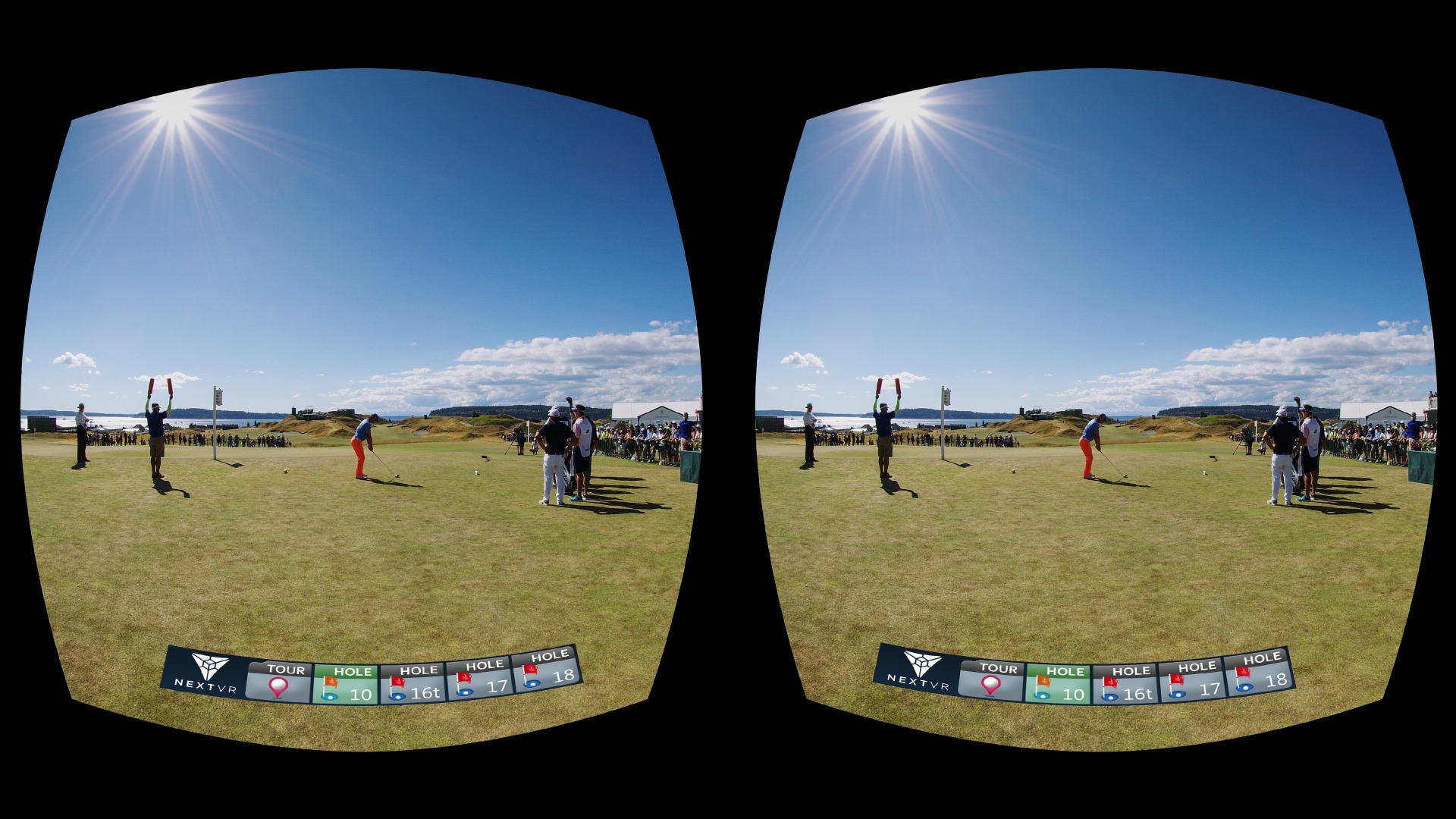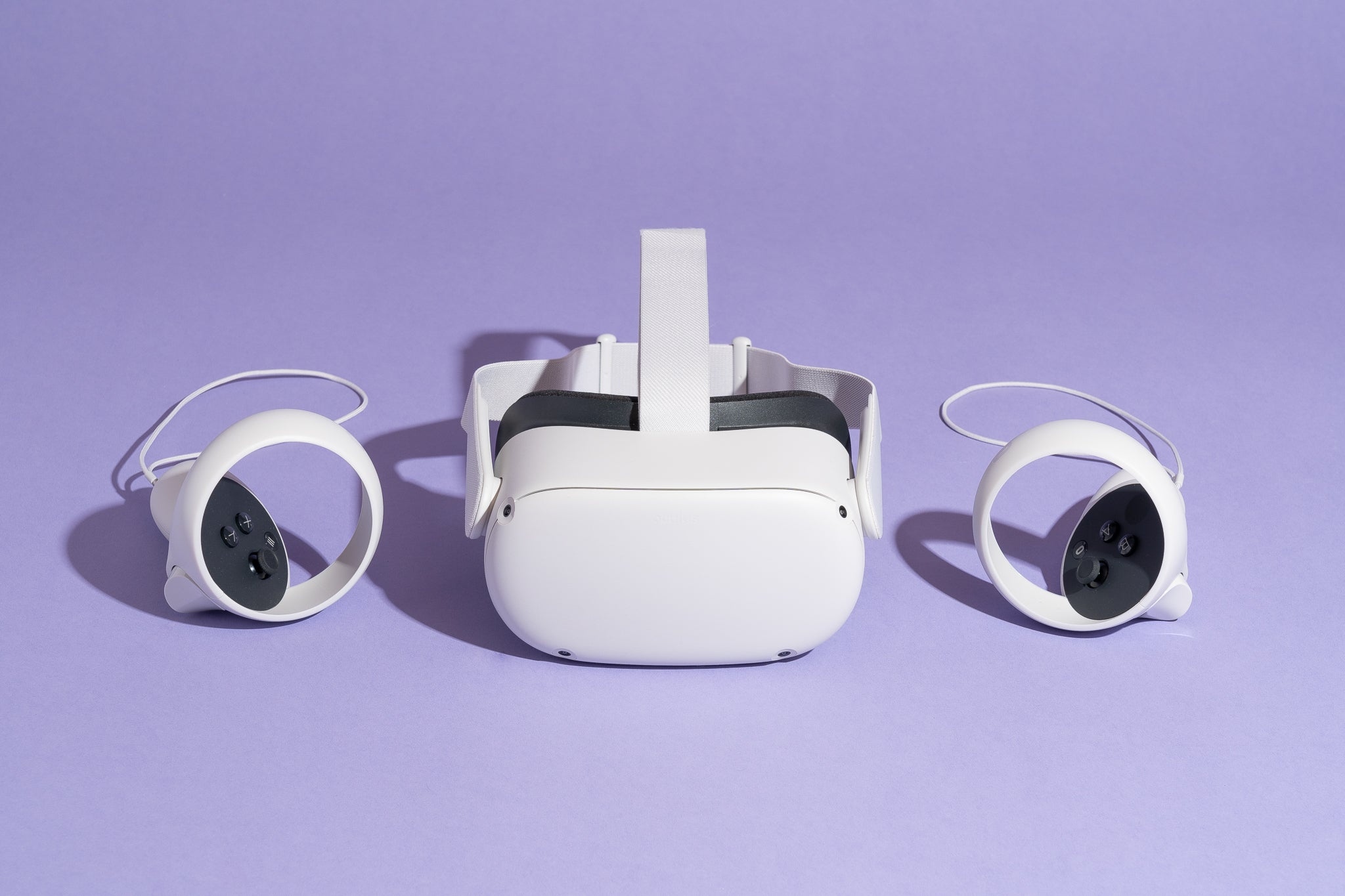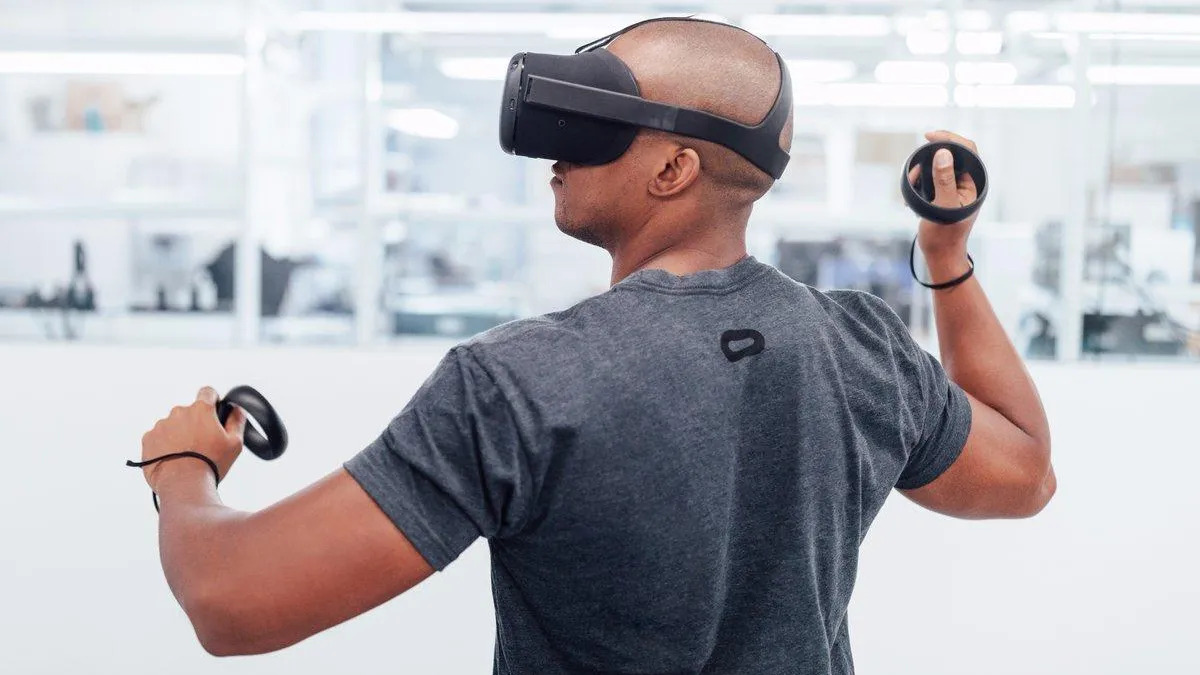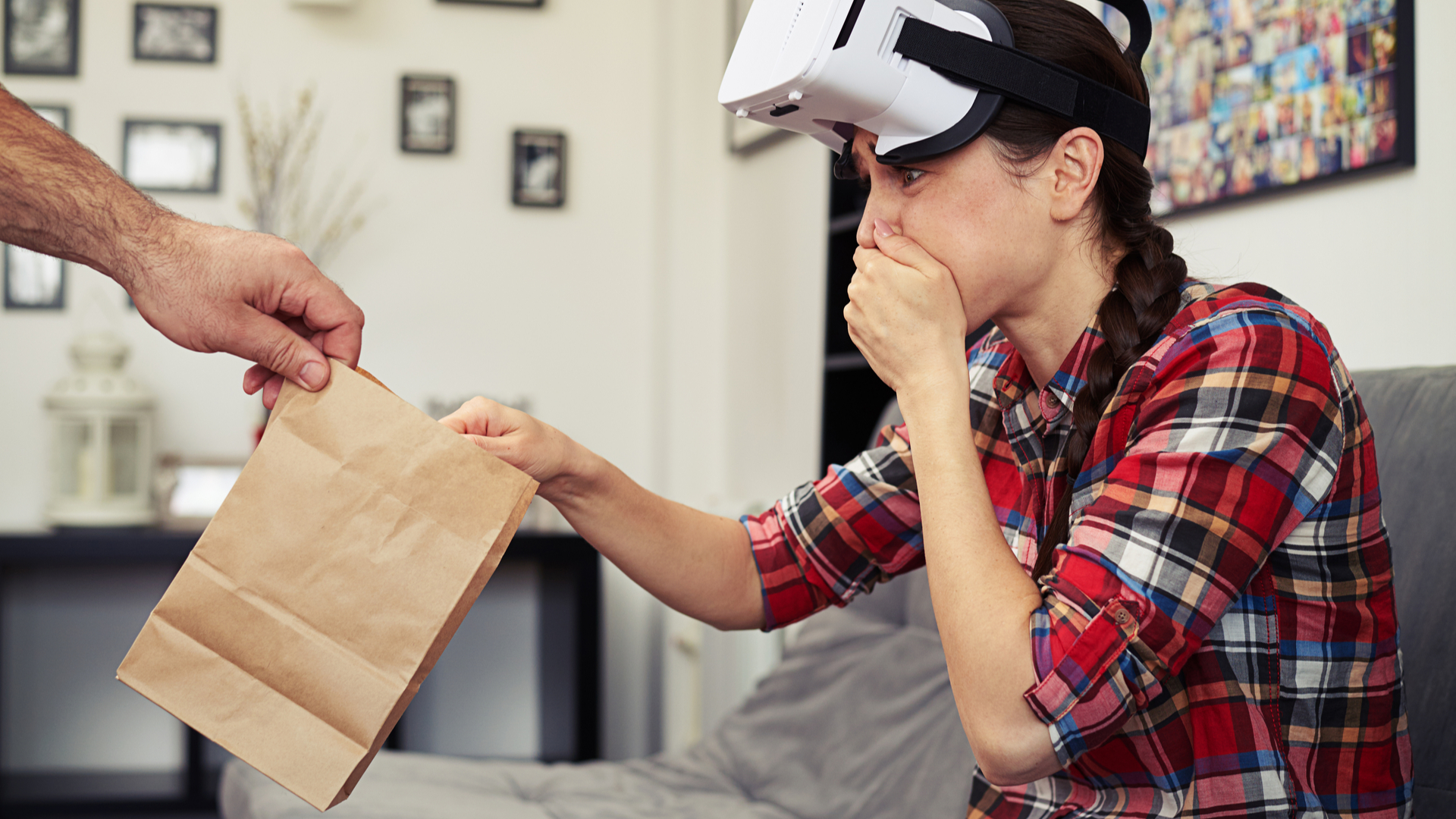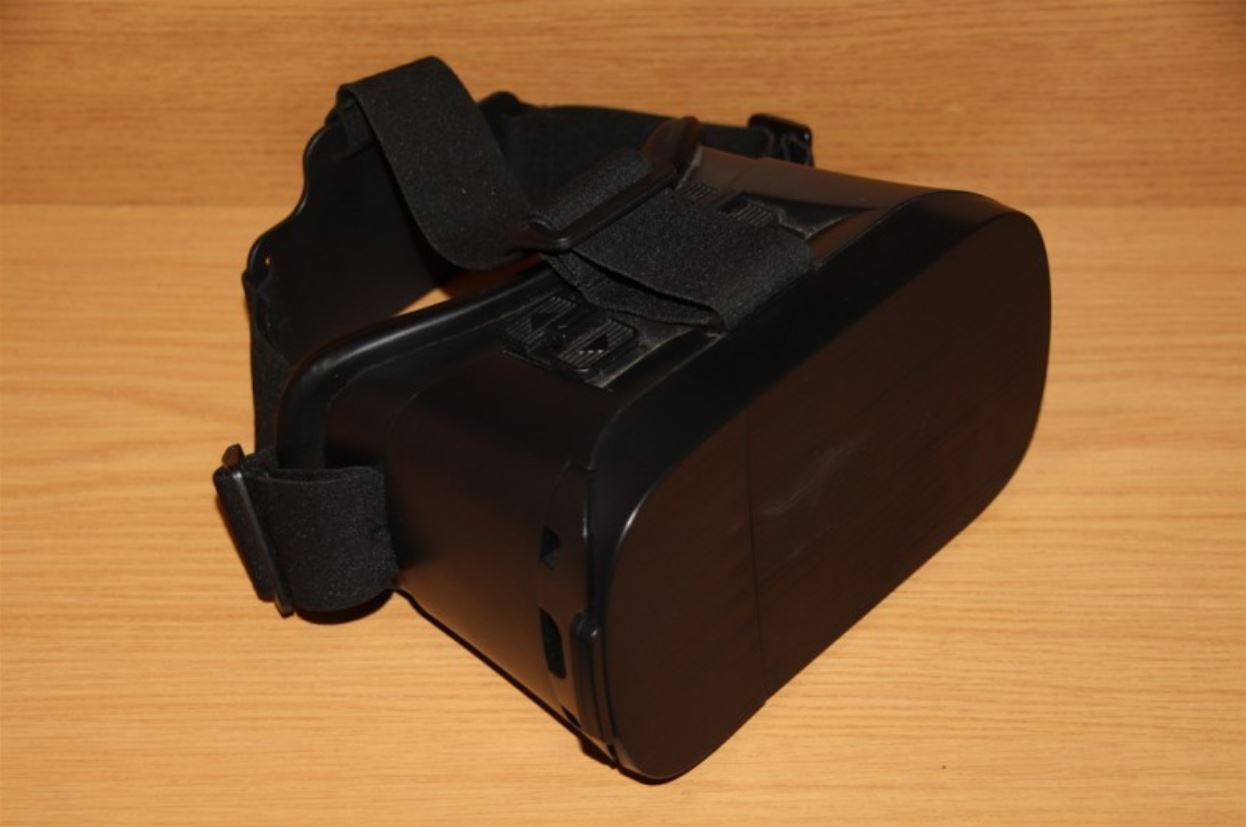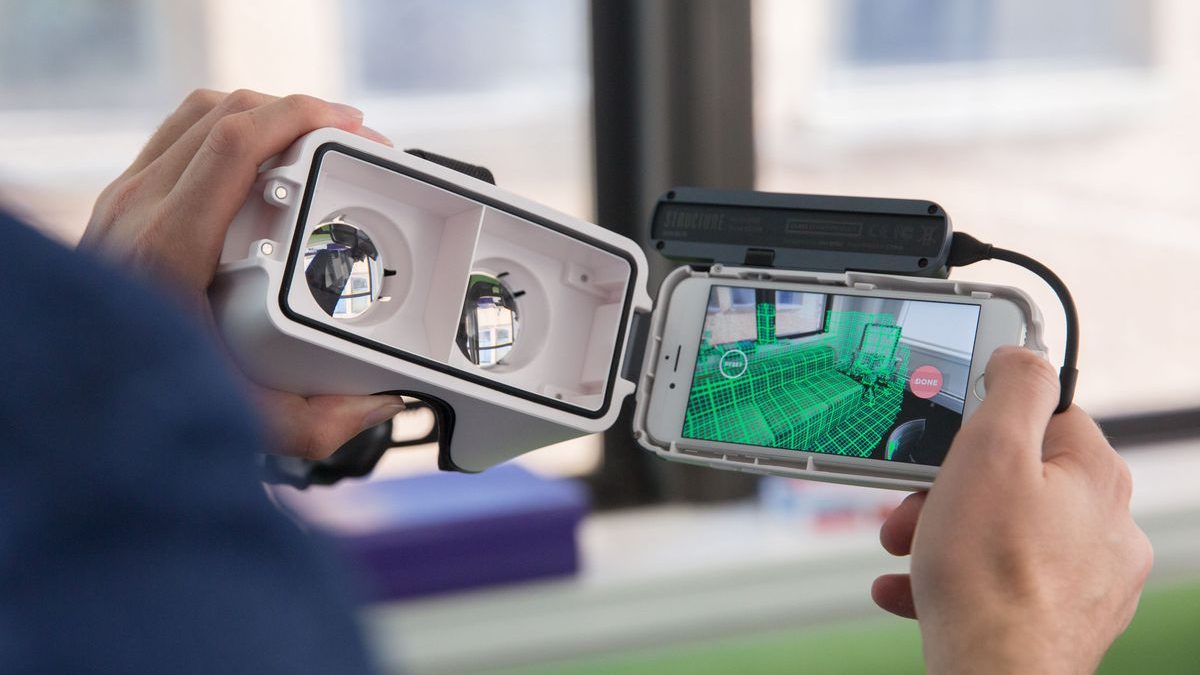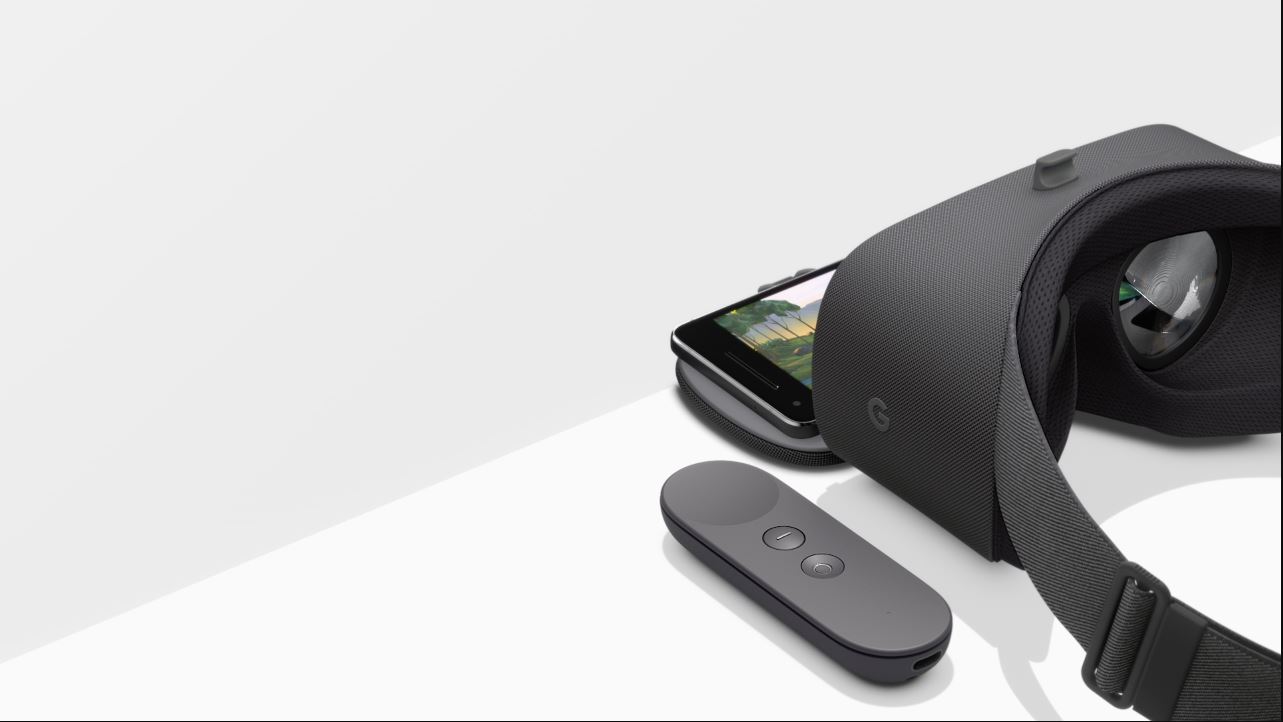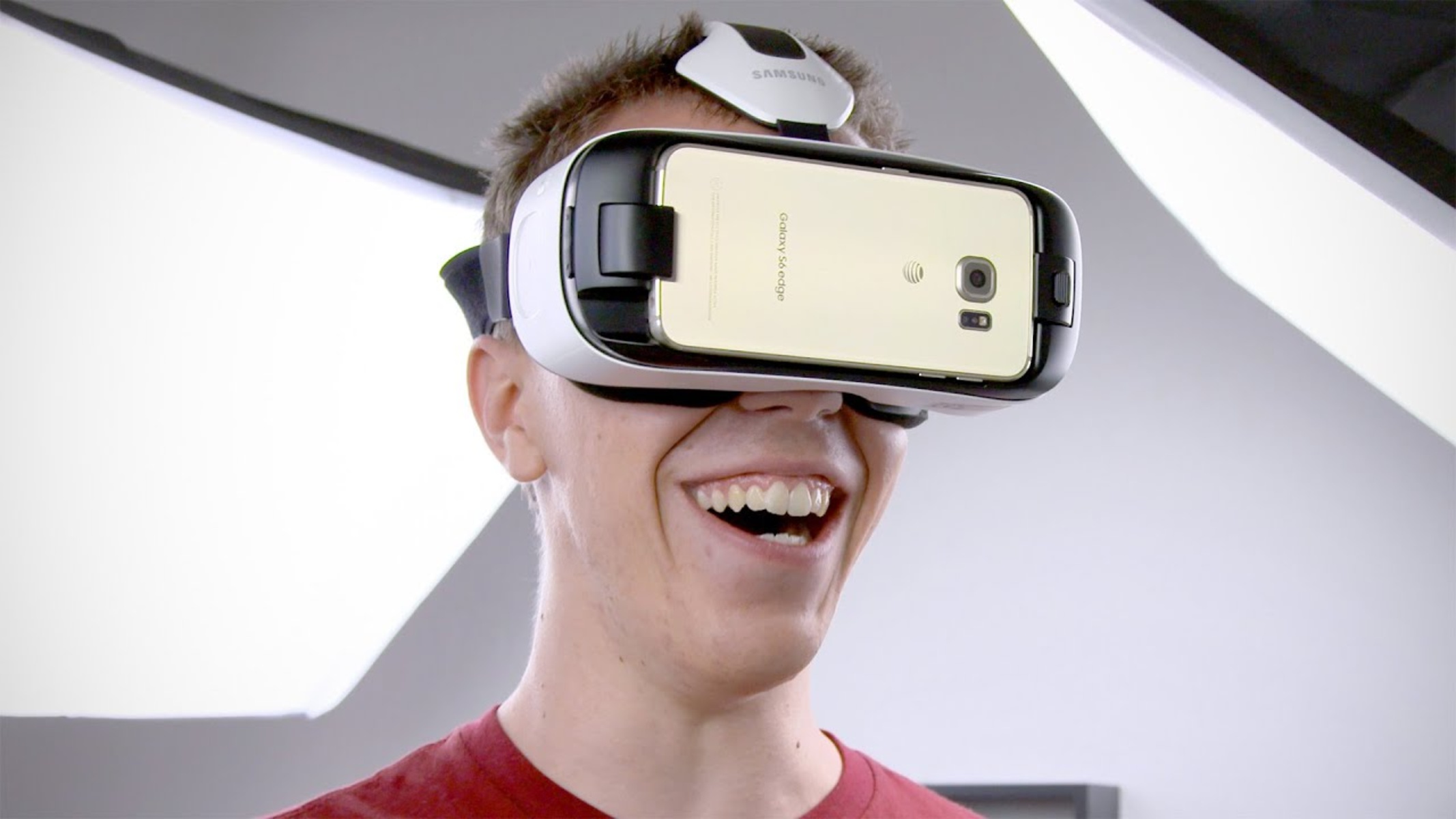Introduction
Virtual reality (VR) has taken the world by storm in recent years, offering immersive experiences that transport users to entirely new dimensions. But have you ever wondered how virtual reality can create such a convincing sense of depth and realism? One crucial element that makes this possible is the reliance on slightly different views for each eye.
VR technology allows users to don a headset that completely covers their field of vision, creating a simulated environment that feels incredibly lifelike. Whether you’re exploring a virtual world, playing a video game, or even watching a movie, VR can make you feel like you’re truly present in the experience. But how does it achieve this remarkable feat?
At its core, VR works by tricking the human brain into perceiving a virtual environment as if it were real. It does this by stimulating the visual and auditory senses in a way that closely mirrors our natural perception of the world around us. However, there is one crucial aspect of human vision that VR technology must replicate – our ability to perceive depth.
Depth perception is a fundamental aspect of human vision that allows us to perceive the distance and spatial relationships between objects. It plays a vital role in our everyday lives, helping us navigate our environment and interact with the world around us. VR technology strives to recreate this sense of depth by leveraging a principle called stereopsis.
Stereopsis is the brain’s ability to fuse slightly different images from each eye into a single perception of depth. When we view the world with both eyes open, each eye sees a slightly different perspective of the same scene. These differences are most pronounced for objects that are closer to us, leading to a sense of depth and dimensionality.
To create a similar effect in virtual reality, the technology presents each eye with a slightly different view of the digital environment. This slight divergence in perspective is what gives virtual experiences their immersive and realistic feel. By closely replicating the natural cues our brain uses to perceive depth, VR can transport us to other worlds and make them feel astonishingly real.
But why do we need slightly different views for each eye? How does it contribute to the overall sense of depth and immersion in virtual reality? In the following sections, we’ll explore the importance of providing these distinct views and the techniques used to generate them. So, grab your headset and get ready to dive deeper into the fascinating world of VR!
The Basics of Virtual Reality
Before we delve into the intricacies of how virtual reality relies on slightly different views for each eye, let’s begin by understanding the basics of this revolutionary technology. Virtual reality, often referred to as VR, is a simulated experience that can be similar to or completely different from the real world.
At its core, VR aims to immerse users in a virtual environment that feels as lifelike as possible. By wearing a specialized headset, users can enter a digital realm that stimulates their senses and creates the illusion of being physically present in that environment. This can include sounds, visuals, and even haptic feedback to enhance the overall experience.
Virtual reality has gained popularity across various industries, including gaming, entertainment, education, healthcare, and more. Its applications go beyond mere entertainment, with many professionals harnessing its power for training purposes, architectural walkthroughs, and even therapeutic interventions.
The technology behind virtual reality involves tracking the user’s movements and adjusting the visual and auditory stimuli accordingly. This tracking can be achieved through various methods, such as using sensors, cameras, or even external devices like controllers or gloves that capture the user’s gestures and interactions.
One of the key components of virtual reality is the display system, which is typically a high-resolution screen placed inside the headset. This screen occupies the user’s entire field of view, providing a fully immersive experience. The quality and resolution of the display play a crucial role in creating a realistic and convincing virtual environment.
In addition to the display, VR headsets often incorporate audio systems to enhance the sense of immersion. By spatially positioning sounds, users can experience a more realistic audio environment, further enhancing the overall virtual experience.
Interactivity is another significant aspect of virtual reality. While some experiences might be passive, allowing users to observe a virtual environment similar to watching a film, many VR applications encourage active engagement. Users can interact with objects, manipulate their surroundings, and even engage in virtual social interactions with other users.
As virtual reality continues to advance, developers are constantly pushing the boundaries of what is possible. Graphics and rendering technologies are improving, allowing for more realistic and visually stunning virtual worlds. The incorporation of advanced tracking systems, such as full-body motion capture or eye-tracking, further enhances the level of immersion and interaction.
With a solid understanding of the basics of virtual reality, we can now explore the intricate details of how the technology creates a sense of depth and realism through the use of slightly different views for each eye. So let’s dive deeper into the fascinating world of VR and uncover the secrets behind its immersive experiences!
How Virtual Reality Works
Virtual reality (VR) works by combining various technologies to create a simulated environment that engages our senses and transports us to a digital world. To understand how VR works, let’s take a closer look at the key components and processes involved.
At the heart of VR is the display system, typically housed within a headset that the user wears. The display presents a high-resolution image that fills the user’s field of view, ensuring an immersive visual experience. Some advanced VR setups even offer a wide field of view, mimicking our natural peripheral vision.
The visual experience of virtual reality relies on two primary factors: stereoscopic rendering and head-tracking. Stereoscopic rendering involves presenting a slightly different image to each eye, simulating the way our eyes naturally perceive depth in the real world. This creates a three-dimensional effect and gives the illusion of depth and distance within the virtual environment.
In addition to stereoscopic rendering, head-tracking plays a crucial role in VR immersion. By tracking the user’s head movements and updating the displayed image in real-time, the system creates the illusion that the user is looking around and exploring the virtual world. This tracking is often achieved using sensors, such as gyroscopes, accelerometers, or external cameras, allowing for a seamless and natural interaction with the virtual environment.
Creating a convincing audio experience is another essential aspect of virtual reality. Sound plays a significant role in our perception of the world, and VR aims to reproduce this in a realistic manner. By incorporating spatial audio techniques, VR systems can create a sense of depth and directionality, enhancing the overall immersion of the virtual experience.
Interactivity is a crucial feature that sets virtual reality apart from traditional media. VR applications often incorporate a range of input methods, such as handheld controllers, motion-tracking devices, or even gloves that allow users to interact with the virtual environment. This interactivity adds an extra layer of engagement and enables users to manipulate objects, navigate through virtual spaces, and participate in virtual activities.
Behind the scenes, powerful software and hardware work together to render and process the visual and auditory information. Advanced graphics processing units (GPUs) help generate realistic and detailed visuals, optimizing the virtual environment’s performance to maintain smooth and seamless experiences.
Furthermore, VR experiences can be classified into two categories: fully immersive and augmented reality (AR). Fully immersive VR aims to completely replace the real-world environment with a virtual one, while AR integrates virtual elements into the real world. AR overlays digital information onto the user’s surroundings, offering a blend of virtual and physical reality.
As technology continues to advance, virtual reality experiences are becoming more realistic, engaging, and accessible. The ability to explore new worlds, engage in virtual social interactions, and undertake simulated training programs holds immense potential across numerous industries.
Now that we understand the basics of how virtual reality works, let’s explore the concept of stereopsis and how it contributes to creating a sense of depth and immersion in VR experiences.
The Concept of Stereopsis
Stereopsis is a remarkable phenomenon of human vision that enables us to perceive depth and three-dimensionality in the world around us. It is a crucial aspect of how we interpret our visual environment and plays a significant role in the effectiveness of virtual reality experiences.
When we look at a scene with both of our eyes, each eye captures a slightly different image due to their different positions on our face. This is known as binocular disparity. These slight differences in perspective between the two eyes serve as important visual cues that our brain uses to calculate the depth and distance of objects in our surroundings.
Our brain merges the slightly different images from the two eyes into a single, cohesive perception of the world, taking advantage of the binocular disparity. This integration process allows us to perceive the depth and spatial relationships between objects accurately.
Stereopsis relies on the brain’s ability to fuse the images from each eye, aligning corresponding pixels to create the perception of depth. When objects are closer to us, the disparity between the two images is more pronounced, resulting in a stronger sense of depth. On the other hand, objects that are farther away exhibit less disparity, indicating a greater distance from the observer.
In the context of virtual reality, stereopsis is recreated by presenting each eye with a slightly different view of the digital environment. This mimics the natural viewing conditions of our eyes and allows our brain to perceive depth in the virtual world. By carefully manipulating the disparity between the images presented to each eye, VR technology can create a convincing sense of depth and immersion.
Accurate stereopsis in virtual reality is essential for creating a realistic and immersive experience. If the disparity between the images presented to each eye is incorrect or inconsistent, it can result in an unnatural perception of depth. This can lead to discomfort, disorientation, and an overall reduced sense of presence within the virtual environment.
Developers and engineers of VR technology strive to achieve precise stereoscopic rendering by carefully calibrating the images presented to each eye. By measuring the distance between the eyes (known as interpupillary distance), they can ensure that the disparity between the views is accurate and corresponds to the virtual scene’s depth cues.
Stereopsis, with its ability to transform separate images into a cohesive, three-dimensional perception, plays a crucial role in creating the visually compelling experiences of virtual reality. By replicating the principles of stereopsis, VR technology has opened up a whole new realm of possibilities, immersing us in virtual worlds that feel astonishingly real.
Now that we understand the concept of stereopsis and its importance in perceiving depth, let’s explore how virtual reality leverages this concept to create a sense of depth and immersion through the use of slightly different views for each eye.
Creating a Sense of Depth in Virtual Reality
One of the key goals of virtual reality is to immerse users in a digital environment that feels convincingly real. To achieve this, VR technology relies on various techniques to create a sense of depth and spatial awareness. By leveraging the principles of human vision and incorporating visual cues, virtual reality can transport users to a world that feels truly immersive.
Creating a sense of depth in virtual reality starts with accurately rendering the virtual scene. High-quality graphics and realistic rendering techniques help recreate the appearance of objects, textures, and lighting, mimicking the visual cues we observe in the real world. This attention to detail adds depth and realism to the virtual environment.
In addition to realistic rendering, virtual reality harnesses the power of stereopsis, as we explored in the previous section. By presenting each eye with a slightly different view of the virtual world, virtual reality systems replicate the natural disparity that our eyes perceive in the real world. This binocular disparity is crucial for our brain to interpret depth and create a sense of immersion in the virtual environment.
To enhance the perception of depth, virtual reality also relies on other visual cues, such as perspective, shading, and occlusion. Techniques like perspective projection ensure that objects in the virtual scene appear to change in size as they move closer or farther away, just as they do in the real world. Shading techniques, such as lighting and shadowing, add further depth and realism, providing important visual cues for depth perception.
Occlusion, or the blocking of objects by others, is another effective cue for depth perception. When objects in the virtual environment occlude or partially cover each other, it creates an illusion of depth as our brain perceives these occlusions as objects being located at different distances from the viewer. This technique adds an important level of realism and depth to the virtual scene.
Depth cues such as motion parallax and depth of field also contribute to the sense of depth in virtual reality. Motion parallax refers to the apparent movement of objects at different depths as the user moves their head or eyes. This effect mimics the way objects in the real world move relative to one another as we change our viewpoint. Depth of field, on the other hand, simulates the way our eyes focus on objects at different distances, blurring objects that are not in the viewer’s focal range.
In virtual reality, techniques such as dynamic depth of field and adaptive motion parallax are employed to enhance the sense of depth and realism. These techniques adjust the focus and movement of objects in the virtual scene based on the user’s viewpoint, creating a more natural and convincing experience.
By combining these various visual cues and rendering techniques, virtual reality systems can create a compelling sense of depth and immerse users in a digital environment that feels remarkably real. The ability to perceive depth accurately enhances the overall sense of presence, allowing users to interact with virtual objects and navigate through virtual spaces with a strong sense of spatial awareness.
Now that we have explored the techniques used to create a sense of depth in virtual reality let’s dive into why each eye needs a slightly different view and how it further enhances the immersive experience.
Why Each Eye Needs a Slightly Different View
Virtual reality relies on providing each eye with a slightly different view of the virtual environment to create a convincing sense of depth and immersion. But why is this necessary, and how does it contribute to the overall virtual experience?
Our ability to perceive depth in the real world is largely due to the binocular disparity between our two eyes. Each eye captures a slightly different perspective of the same scene because of their position on our face. This disparity provides important visual cues that our brain uses to calculate depth and distance accurately.
In virtual reality, replicating this binocular disparity is crucial for creating a sense of depth. By presenting each eye with a slightly different view of the virtual scene, VR systems mimic the natural viewing conditions our eyes experience in the real world. This illusion of depth is what makes virtual environments feel more immersive and realistic.
When objects in the virtual space have a distinct disparity between the views seen by each eye, our brain interprets this as depth, just as it does in the real world. This means that objects that appear closer in the virtual scene will have a larger disparity, while objects that are farther away will have a smaller disparity.
By providing each eye with a slightly different view, VR technology creates the illusion of depth and allows users to perceive virtual objects as having three-dimensional form. This depth perception enhances the overall sense of presence and immersion, making the virtual experience feel more realistic and engaging.
Furthermore, providing different views for each eye helps to minimize the conflict between the virtual and real-world visual cues. In the real world, our eyes are constantly adjusting their focus, tracking motion, and perceiving depth based on a multitude of visual cues. When these cues conflict in virtual reality, such as when the accommodation (focus) cue does not match the vergence (convergence) cue, it can result in discomfort or a decreased sense of realism.
By presenting slightly different views to each eye, virtual reality helps to alleviate this conflict by providing additional depth cues that our brains are accustomed to processing. This helps to create a more seamless and comfortable visual experience, reducing the likelihood of visual discomfort or fatigue.
Additionally, providing different views for each eye allows for improved spatial perception and judgment in virtual reality. By analyzing the disparities between the two views, our brains can accurately gauge the distance and location of objects, allowing for more precise depth perception and spatial awareness.
This enhanced spatial perception is particularly important for virtual reality applications that involve interaction with the virtual environment, such as manipulating objects or navigating through virtual spaces. Accurate depth perception contributes to a more natural and intuitive user experience, as users can rely on their natural ability to perceive depth and distances in the virtual environment.
In summary, providing each eye with a slightly different view is crucial for creating a convincing sense of depth and immersion in virtual reality. By replicating the binocular disparity observed in the real world, VR systems tap into our natural ability to perceive depth, allowing us to interact with virtual environments that feel remarkably real. This technique not only enhances the sense of presence and immersion but also ensures comfortable and accurate depth perception.
The Role of Parallax in Virtual Reality
Parallax is a phenomenon that plays a crucial role in creating depth perception and enhancing the sense of realism in both the real world and virtual reality. Understanding how parallax works is essential for developing immersive VR experiences that accurately represent the spatial relationships between objects.
In simple terms, parallax refers to the apparent displacement or shift in the position of objects when viewed from different viewpoints. This shift occurs because each eye sees a slightly different perspective of the same scene, thanks to their individual positions on our face.
Parallax is closely related to the concept of stereopsis, which we explored earlier. Stereopsis relies on the differences in the images captured by each eye to interpret depth and distance. Parallax adds another layer to this by incorporating lateral movement into the equation.
In virtual reality, parallax is simulated by tracking the user’s head movements and adjusting the perspective of the displayed scene accordingly. As the user looks around or moves their head, virtual objects in the scene appear to shift position, creating a sense of depth and enhancing the perception of realism.
Parallax in virtual reality helps to create a more convincing sense of depth by replicating the natural parallax our eyes experience in the real world. As we move our heads, objects that are closer appear to move more significantly than objects that are farther away. This is known as motion parallax.
Motion parallax contributes to the perception of depth by providing cues about the relative distances of objects in the scene. For example, when we move our heads to the left, objects that are closer to us will appear to move in the opposite direction, relative to objects that are farther away.
In virtual reality, motion parallax is essential for creating an immersive experience. As users move their heads, the parallax effect reinforces their sense of being physically present in the virtual environment. This contributes to a heightened feeling of realism and enhances the overall sense of immersion.
In addition to motion parallax, virtual reality also makes use of another form of parallax called binocular parallax. Binocular parallax occurs when each eye’s viewpoint is slightly offset, resulting in a different view of the objects in the scene.
By simulating binocular parallax, virtual reality taps into our brains’ natural ability to interpret depth based on the differences between the views seen by each eye. This adds another layer of depth perception and enhances the overall sense of realism. Binocular parallax adds more depth cues, making the virtual environment appear more tangible and engaging.
Overall, parallax in virtual reality is vital for creating a convincing sense of depth, spatial relationships, and immersion. By simulating both motion parallax and binocular parallax, VR systems replicate the natural parallax cues our brains are accustomed to, ensuring a more realistic experience. This combination of parallax effects, along with stereopsis and other depth cues, contributes to the sense of presence, depth, and immersion that defines a truly engaging virtual reality experience.
Overcoming the Limitations of Human Vision
Despite the incredible capabilities of human vision, it is not without its limitations. Virtual reality technology aims to overcome some of these limitations to create a more immersive and realistic experience. By understanding the constraints of human vision, VR developers can design systems that compensate for these limitations and enhance the visual perception of virtual environments.
One of the limitations of human vision is the restricted field of view. Our eyes have a limited angle within which they can capture visual information in sharp detail. In everyday life, we use our peripheral vision to gather additional context, but the level of detail diminishes towards the edges of the visual field. Virtual reality addresses this limitation by providing headsets with a wide field of view, allowing users to see a broader and more immersive virtual environment.
Another limitation is our limited ability to focus on multiple distances simultaneously. Our eyes are only able to focus sharply on objects at a certain distance, a concept known as accommodation. In VR, this can be overcome by using techniques such as depth of field rendering, which dynamically adjusts the focus based on the user’s gaze. This helps to create a more natural and realistic visual experience by simulating the natural depth cues our eyes rely on.
Human vision is not always accurate or reliable when it comes to perceiving depth and distance. Optical illusions and the limitations of visual cues can sometimes lead to misperceptions. Virtual reality uses advanced rendering techniques and stereo imagery to present consistent and accurate depth cues to the user. By providing precise and reliable visual information, VR can overcome the limitations of human vision and create a more accurate perception of depth and distance in the virtual environment.
Human vision is also limited by the fixed resolution of our retinas. In VR, high-resolution displays are used to overcome this limitation, ensuring that the virtual environment appears crisp and detailed. This high level of visual fidelity contributes to the overall realism and immersion of the virtual experience.
Another limitation is our susceptibility to visual fatigue and discomfort, particularly when exposed to prolonged periods of focusing on nearby objects, such as screens. Virtual reality systems take measures to alleviate these issues, such as providing displays with high refresh rates and reducing motion sickness through optimized tracking and smooth rendering. These advancements minimize the negative visual effects and ensure a more comfortable and enjoyable VR experience.
Furthermore, our eyes have limited sensitivity to colors and contrast, especially in low light conditions. Virtual reality leverages advancements in display technology to present vibrant colors and high-contrast visuals, enhancing the overall visual experience and compensating for the limitations of human vision.
By understanding these limitations and designing virtual reality systems to compensate for them, developers can create immersive experiences that overcome the constraints of human vision. Through high-resolution displays, precise rendering techniques, and careful attention to visual cues, VR can deliver a more realistic and visually engaging experience that transcends the limitations of our natural vision.
Techniques for Generating Different Views for Each Eye
In virtual reality, the goal is to present each eye with a slightly different view of the virtual environment to create a sense of depth and immersion. Various techniques and technologies are employed to generate these distinct views and replicate the binocular disparity our eyes experience in the real world.
One commonly used technique is known as stereoscopic 3D rendering. Stereoscopic rendering involves creating two separate views of the scene, one for each eye, by slightly shifting the camera positions or adjusting the perspective. These views are then presented to the corresponding eye, either through separate displays or through a single display with polarization or active shuttering techniques.
Another technique used in generating different views for each eye is known as image-based rendering. This method involves capturing or generating a set of images from different viewpoints and using these images to create a 3D virtual environment. The images are then mapped onto a 3D model, which is rendered from the desired perspective for each eye, providing the necessary disparity for depth perception.
Depth-based rendering techniques, such as depth maps or depth buffers, are also utilized to generate different views for each eye. These techniques involve calculating the depth of each pixel in the scene and using this information to create the appropriate disparity between the left and right eye views. This allows for precise control over the perceived depth and enhances the realism of the virtual environment.
Head-tracking technology plays a critical role in generating different views for each eye. By tracking the movement of the user’s head, the virtual reality system can adjust the perspective of the scene in real-time, ensuring that the views presented to each eye align with the user’s changing position. This synchronization between head movement and view updates helps to maintain an accurate and realistic sense of depth and immersion.
Advanced rendering techniques, such as foveated rendering, are also employed to optimize the generation of different views. Foveated rendering focuses on rendering the central portion of the user’s field of view with higher detail, while reducing the level of detail in the peripheral regions. This selective rendering approach helps to optimize performance and reduce the computational load, while still providing the necessary depth cues for the central vision where our eyes are most sensitive to detail.
Real-time rendering techniques, such as single-pass stereo rendering or multi-view rendering, are utilized to efficiently generate the distinct views for each eye. These techniques take advantage of modern graphics processing units (GPUs) to simultaneously render the necessary images for both eyes, minimizing latency and maximizing performance.
Furthermore, adaptive rendering techniques, such as dynamic resolution scaling or foveated rendering, are employed to dynamically adjust the level of detail and resolution based on the user’s gaze and movement. These techniques help to optimize performance and ensure a smooth and immersive experience while still providing the necessary disparity between the views for depth perception.
In summary, a combination of stereoscopic rendering, depth-based techniques, head-tracking, adaptive rendering, and advanced real-time rendering methods are employed to generate different views for each eye in virtual reality. These techniques work together to create a convincing sense of depth and immersion, enabling users to perceive virtual environments as three-dimensional and lifelike experiences.
Benefits and Advantages of Slightly Different Views
The use of slightly different views for each eye in virtual reality offers several benefits and advantages that contribute to the overall sense of immersion and realism in the virtual environment.
One of the key benefits is the creation of depth perception. By presenting each eye with a slightly different perspective of the virtual scene, virtual reality systems replicate the natural binocular disparity that our eyes perceive in the real world. This binocular disparity is the foundation of our depth perception and allows us to accurately perceive the distance and spatial relationships of objects. The use of different views in virtual reality enhances the depth cues, making the virtual environment appear more realistic and lifelike.
The sense of depth created by slightly different views also improves spatial awareness and object localization. With accurate depth perception, users can better understand the distances between objects in the virtual environment, allowing them to interact with virtual objects more naturally and navigate through the space with increased precision.
Additionally, a convincing sense of depth and immersion improves the overall sense of presence in virtual reality experiences. When the virtual environment closely matches our perception of the real world, it creates a stronger feeling of being physically present in the virtual space. This heightened sense of presence enhances the emotional engagement, making the VR experience more captivating and memorable.
Slightly different views for each eye also contribute to reducing the conflict between visual cues. In real-world perception, various visual cues work together to provide depth information. When these cues are inconsistent or conflicting, it can result in discomfort or visual perception issues. By replicating natural binocular disparity, virtual reality helps to align the different visual cues, providing a more coherent and comfortable visual experience.
Another benefit is the improved accuracy and efficiency in judging distances and sizes of objects in the virtual environment. Slightly different views offer additional depth cues that our brains are familiar with, allowing for more precise perception of spatial relationships. This can be particularly advantageous in applications that require accurate depth perception, such as training simulations or medical procedures.
Moreover, the use of slightly different views helps to enhance the illusion of motion and perspective in virtual reality. As users move their heads or change their viewpoints, the disparities between the views change, creating a dynamic perception of depth and perspective. This adds to the realism and immersiveness of the VR experience, making it feel more like interacting with a physical environment.
Overall, the use of slightly different views for each eye in virtual reality provides numerous benefits and advantages. It creates a compelling sense of depth, enhances spatial awareness, improves object localization, increases the sense of presence, minimizes visual cue conflicts, enhances the accuracy of judging distances, and adds to the perception of motion and perspective. These benefits combine to deliver a captivating and immersive virtual reality experience that closely resembles our natural perception of the world.
Conclusion
Virtual reality has revolutionized the way we experience digital content, offering immersive and realistic encounters that transport us to new worlds. The use of slightly different views for each eye plays a central role in creating a convincing sense of depth and immersion in virtual reality.
By replicating the natural binocular disparity observed by our eyes, virtual reality systems tap into our brain’s ability to perceive depth and spatial relationships. This binocular disparity, combined with other depth cues such as parallax and motion, creates a three-dimensional perception of the virtual environment.
The benefits and advantages of generating different views for each eye are substantial. By providing a sense of depth perception, virtual reality enhances spatial awareness, object localization, and accuracy in judging distances. It also contributes to a heightened sense of presence, minimizing conflicts between visual cues and providing a more comfortable and immersive experience.
Techniques such as stereoscopic rendering, depth-based rendering, head-tracking, and adaptive rendering are utilized to generate and synchronize the distinct views for each eye. These techniques simulate the natural visual cues our eyes rely on for depth perception and contribute to the overall realism and immersion of the virtual experience.
As virtual reality technology continues to evolve, we can expect further advancements in generating even more realistic and nuanced views for each eye. These advancements will push the boundaries of immersion, allowing for more seamless and natural interactions in virtual environments.
Virtual reality holds immense potential across various industries, from gaming and entertainment to education, healthcare, and beyond. By harnessing the power of slightly different views for each eye, virtual reality is transforming how we engage with digital content, enabling us to explore, learn, and experience in ways previously unimaginable.
So, embrace the headsets, delve into virtual worlds, and prepare to be amazed as virtual reality continues to redefine our perception of reality itself.







